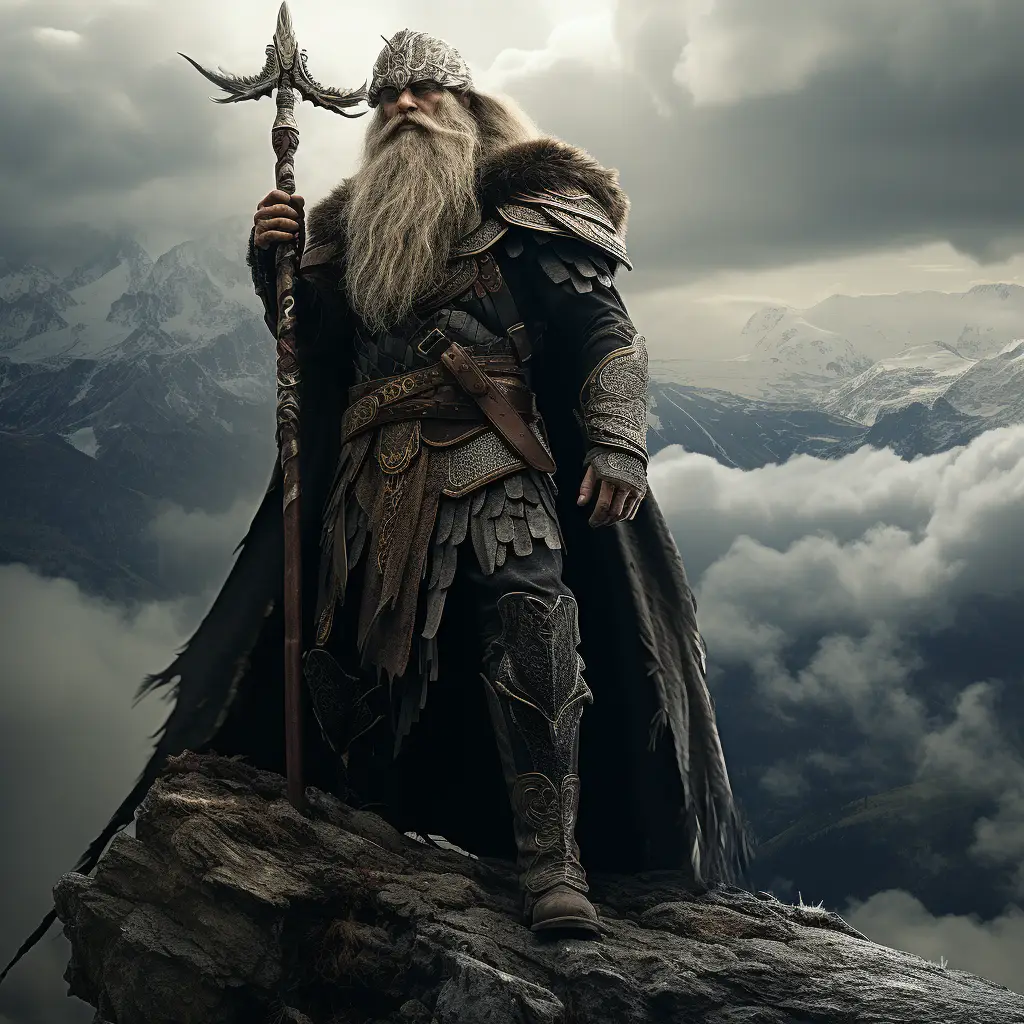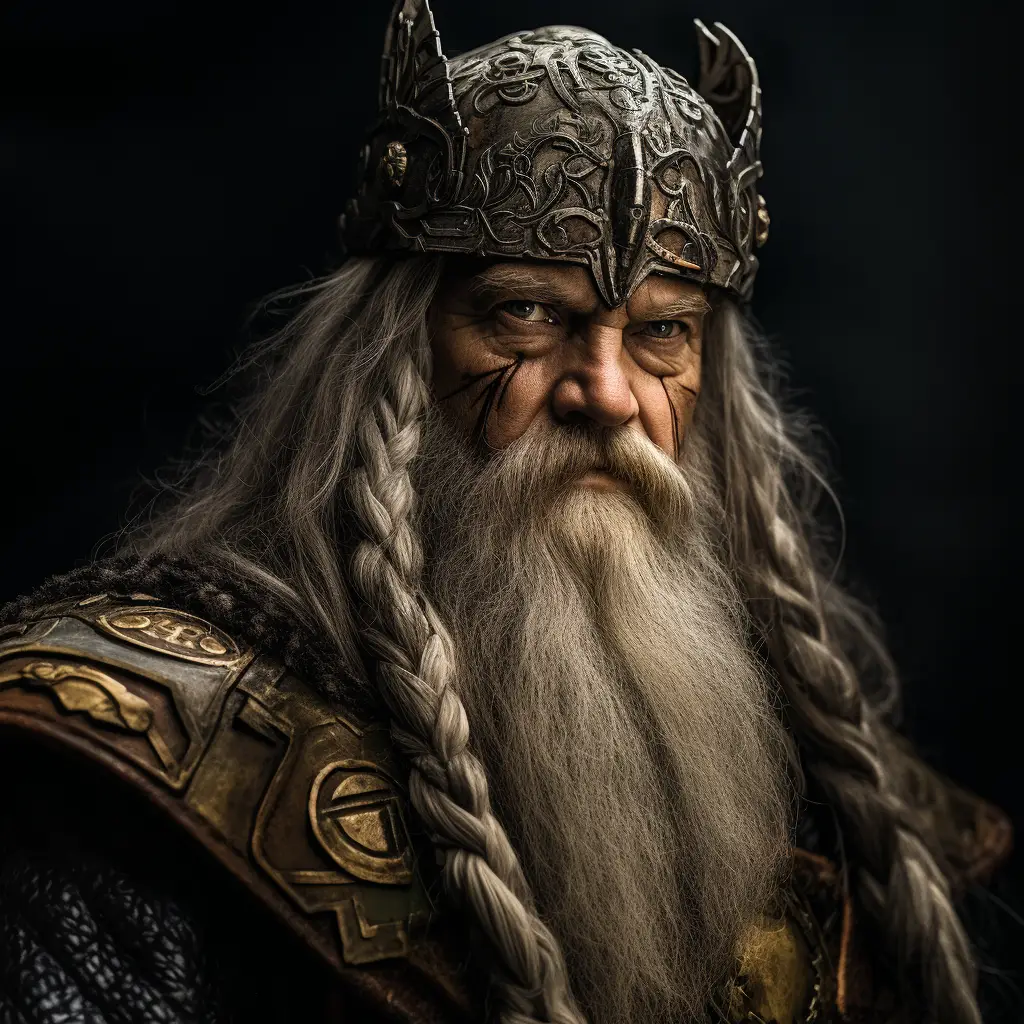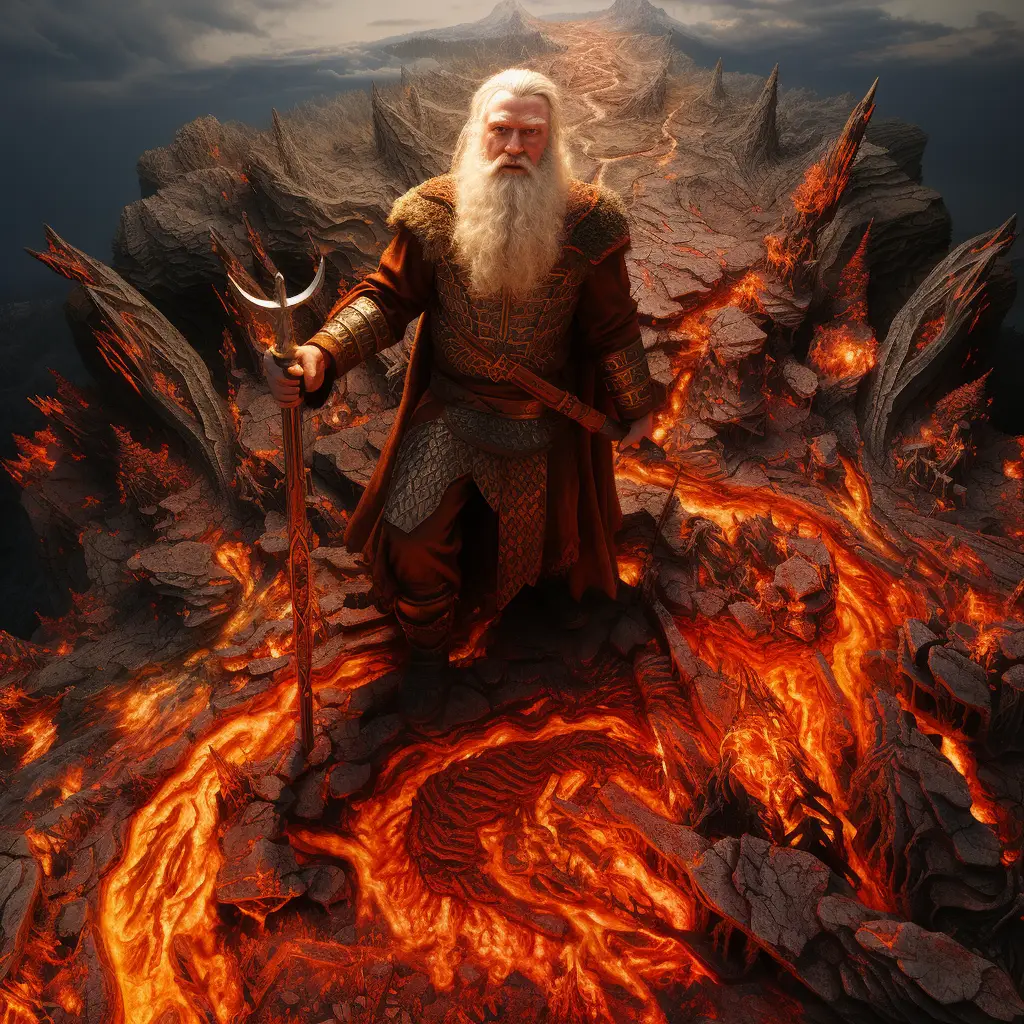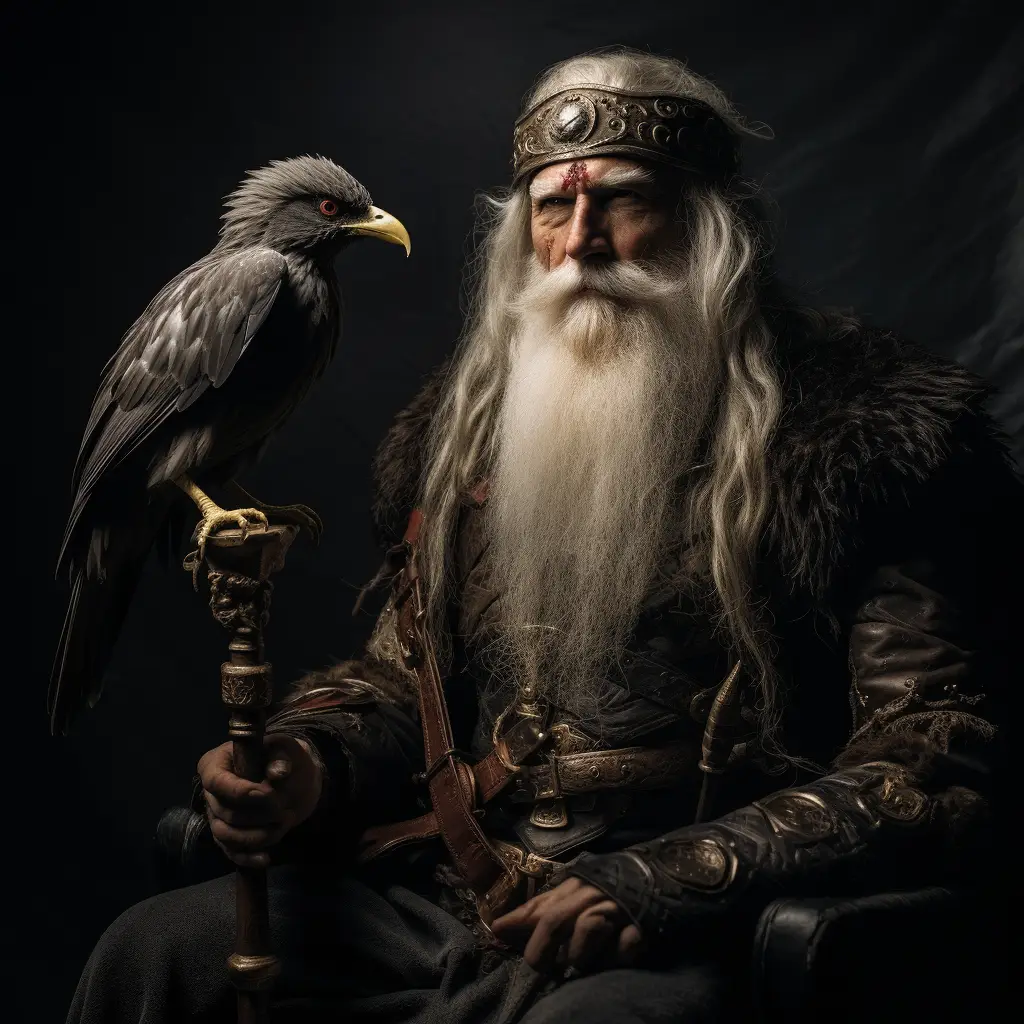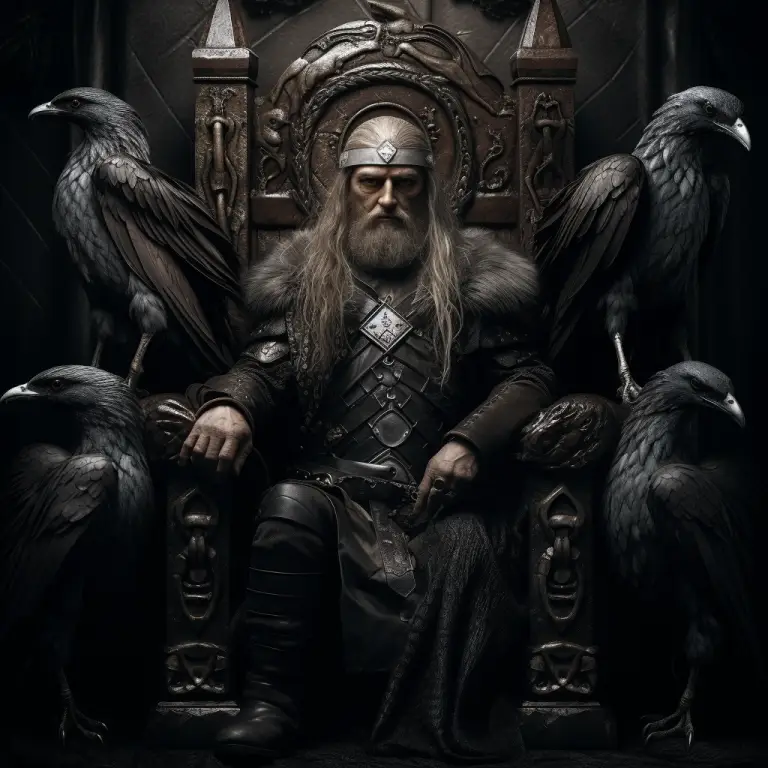Odin is one of the most well known figure in Norse mythology, well known as the Allfather and chief of the Aesir, the principal gods.
Wisdom and Knowledge: Odin is often associated with wisdom, knowledge, and poetry. He gained his wisdom by sacrificing one of his eyes at Mímir’s well in exchange for a drink that granted him vast knowledge.
War and Death: Odin is also a god of war and death. He presides over Valhalla, the hall of fallen warriors in the afterlife, where brave warriors are taken after death. Valkyries, warrior maidens, serve Odin by choosing those worthy to join him in Valhalla.
Ravens and Wolves: Odin is accompanied by two animals, Huginn (Thought) and Muninn (Memory), two ravens that fly around the world to bring him information. He also has two wolves, Geri and Freki, as loyal companions.
Sleipnir: Odin is associated with an eight-legged horse from Norse mythology, It’s said to be incredibly fast and can traverse between the realms. Quite a fascinating creature.
Runes: Odin is credited with discovering the runes, a system of writing and divination in Norse culture. He hung himself on the world tree Yggdrasil for nine days and nights, pierced by his own spear, to gain knowledge of the runes.
Gungnir: Odin possesses a powerful and magical spear named Gungnir, crafted by the dwarves. This spear is known for its accuracy and never missing its target.
Shapeshifting: Odin is capable of shapeshifting into various forms. In some myths, he appears as an old wanderer, testing the hospitality of mortals.
Role in Ragnarök
Odin plays a significant role in the Norse apocalypse, Ragnarök. He is foretold to be slain by the wolf Fenrir during this cataclysmic event.
Here are some key points about Odin and his involvement in Ragnarök:
Foreknowledge: Odin, being a god associated with wisdom and knowledge, is aware of the impending Ragnarök. He knows that a series of events will unfold, leading to a great battle that will result in significant changes to the cosmos.
The Death of Balder: One of the precursors to Ragnarök is the death of Balder, Odin’s son. This event is a harbinger of the chaotic times to come.
Fenrir and Jormungandr: Two powerful adversaries, the wolf Fenrir and the serpent Jormungandr, are key players in Ragnarök. Odin is fated to confront Fenrir, and during the battle, the wolf will devour him.
Surt and the Flames: Odin is destined to face the fire giant Surt during Ragnarök. This confrontation takes place on the battlefield, and it is foretold that Surt will engulf the world in flames.
The Battle of Ragnarök: Odin leads the Aesir into the final battle against various forces, including giants, monsters, and other supernatural beings. This battle is a cosmic struggle that results in widespread destruction.
Death of Odin: As mentioned earlier, Odin meets his end at the jaws of Fenrir during the Battle of Ragnarök. This is a significant event, symbolizing the cyclical nature of life, death, and rebirth in Norse cosmology.
The Aftermath: Despite the devastation of Ragnarök, there is a belief in a post-apocalyptic renewal. Some surviving gods and two human survivors, Líf and Lífþrasir, are said to repopulate the world, and a new, fertile era begins.
Odin’s sacrifice during Ragnarök is seen as part of the larger cosmic cycle, reflecting the Norse worldview of the impermanence of the world and the potential for renewal after destruction. The myth of Ragnarök underscores themes of fate, inevitability, and the cyclical nature of existence in Norse mythology.
Odin’s Marriage
Odin is married to Frigg, who is considered the queen of the Aesir gods. Frigg is depicted as a powerful goddess associated with marriage, motherhood, and domesticity. She is often described as wise and knowledgeable, sharing similar traits with Odin himself.
Their marriage is significant in Norse mythology and plays a role in various myths and stories. Frigg is depicted as a devoted and supportive wife to Odin, often providing counsel and assistance to him. Together, they have several children, including Baldr, the beloved god of light and purity.
While Frigg is Odin’s primary wife, Odin’s character is also associated with other female figures, including the goddesses Gunnlod and Rindr, with whom he has other children.
Overall, Odin’s marriage to Frigg is one of the central relationships in Norse mythology, symbolizing unity, harmony, and the balance of power within the divine realm of Asgard.
Odin’s children
Odin, the chief god of the Aesir, has several children, each with their own distinct characteristics and roles. Here are some of Odin’s most well-known children:
Thor: Perhaps the most famous of Odin’s children is Thor, the god of thunder and lightning, as well as fertility and protection. Thor wields the mighty hammer Mjolnir and is known for his strength and bravery.
Baldr: Baldr is the god of light, purity, and beauty. He is beloved by all the gods for his goodness and innocence. However, he is tragically killed by his blind brother Hodr with mistletoe, leading to Ragnarok.
Vidar: Vidar is a son of Odin and the giantess Grid. He is known for his silence and strength. During Ragnarok, Vidar avenges his father’s death by slaying the wolf Fenrir.
Vali: Vali is the son of Odin and the goddess Rind. He is born specifically to avenge the death of Baldr. Vali grows to adulthood within a day and slays Hodr, Baldr’s killer, shortly after.
Hodr: Hodr is the blind god of darkness, winter, and vengeance. In some accounts, he accidentally kills his brother Baldr with mistletoe, leading to his own death during Ragnarok.
Hermod: Hermod, also known as Hermoðr, is a messenger of the gods and a son of Odin. He undertakes a perilous journey to Hel to plead for Baldr’s release after his death.
Frigg’s Sons: Odin is sometimes considered the stepfather of Frigg’s sons, including Baldur. Frigg is Odin’s wife and the mother of several other gods, such as Hodr, Hermod, and Bragi.
Odin’s Appearance
Odin is typically described as a powerful and imposing figure. as with most of the Norse Gods there is no specific description but there has been some mention of Odin’s appearance.
One Eye: Perhaps the most distinctive feature of Odin is that he only has one eye. According to mythology, he sacrificed his eye at Mímir’s well in exchange for wisdom and knowledge.
Long Beard: Odin is often depicted with a long, flowing beard, emphasizing his age and wisdom. The beard is a symbol of his authority and experience.
Wide-Brimmed Hat: Odin is often described as wearing a wide-brimmed hat that obscures his face. This hat is called a “wide-brimmed hat” or “broad hat” in Old Norse, and it adds to his mysterious and wise persona.
Cloak and Robes: Odin is typically portrayed wearing a cloak or robe, adding to his regal appearance. The clothing is often adorned with symbols and patterns, reflecting his divine status.
Spear and Weaponry: Odin is associated with a powerful and magical spear named Gungnir. This spear is a symbol of his authority in war and battle.
Ravens: Odin is accompanied by two ravens named Huginn (Thought) and Muninn (Memory), who fly around the world and bring him information. They are often depicted perched on his shoulders.
Wolves: Odin is also associated with wolves. His two wolves, Geri and Freki, are his loyal companions.
Eight-Legged Horse: Odin is sometimes shown riding his legendary steed, Sleipnir, an eight-legged horse. Sleipnir is a swift and otherworldly horse that aids Odin in his travels.
